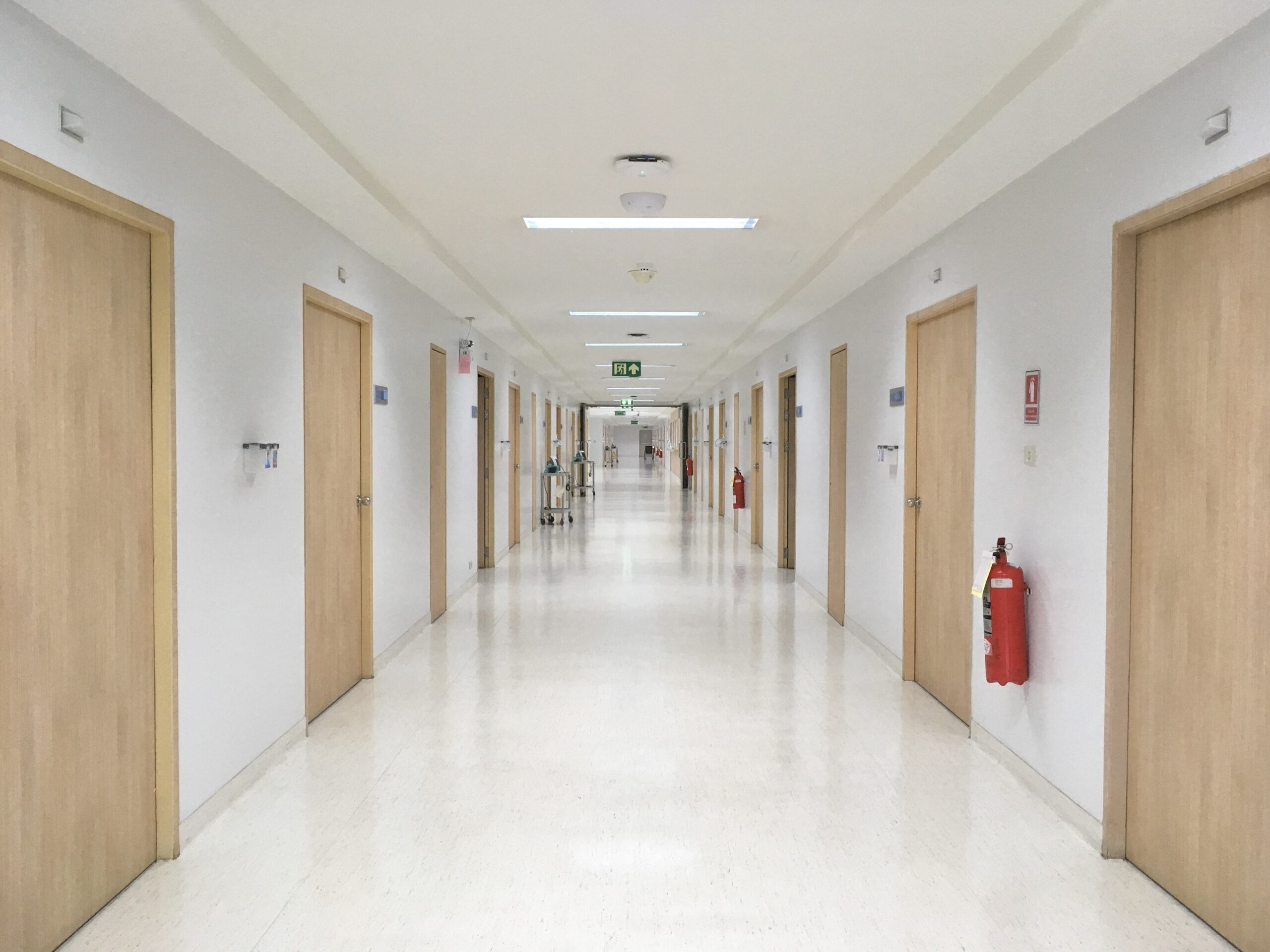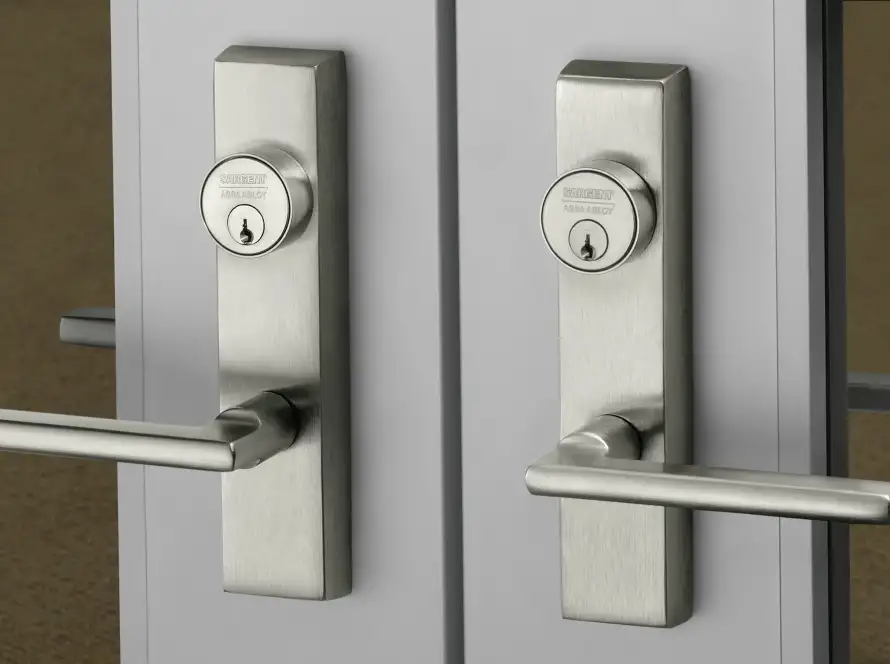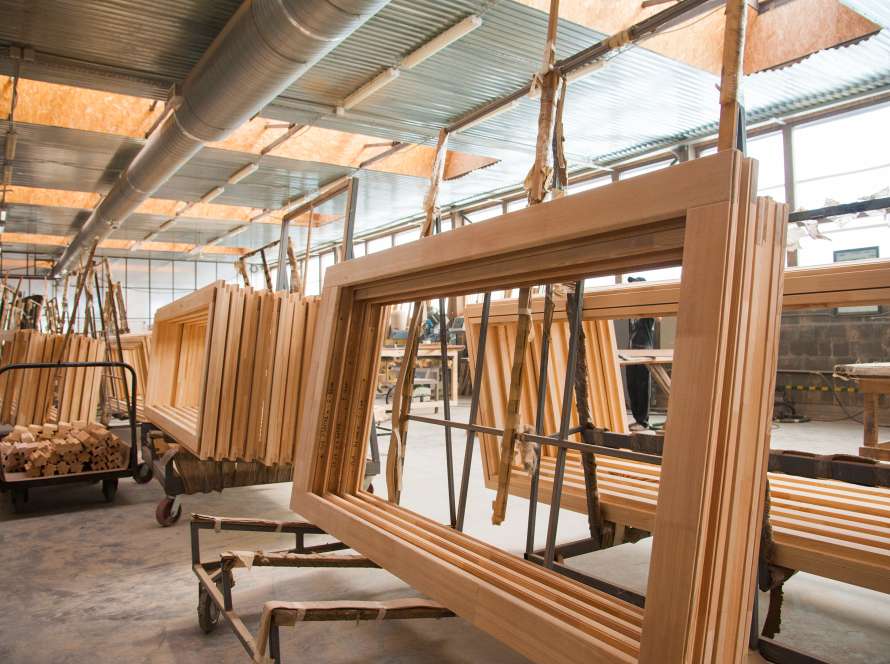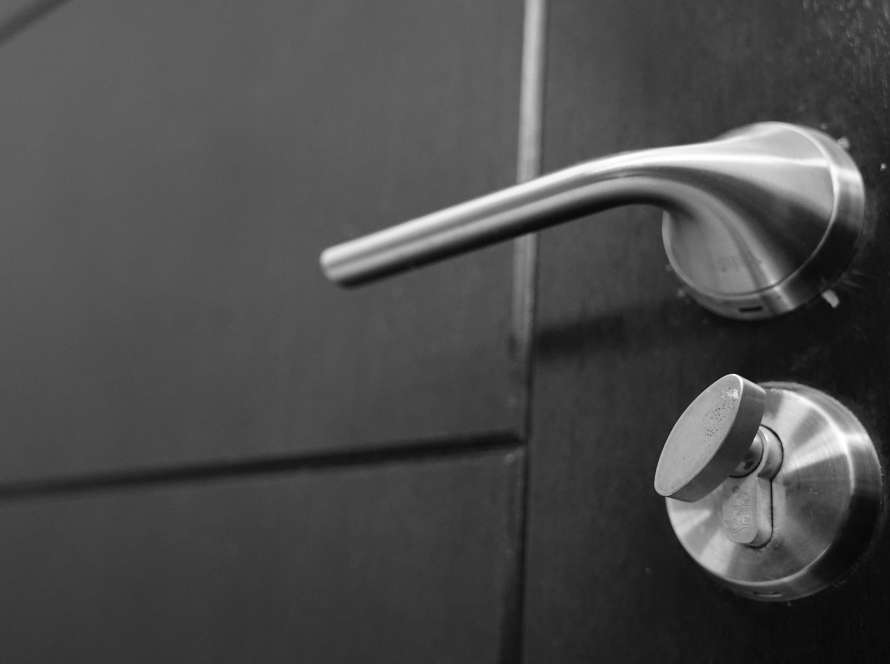When it comes to selecting doors for commercial properties, commercial wood doors stand out as a top choice. Known for their versatility, aesthetic appeal, and durability, these doors are suitable for a wide range of applications, from offices and retail spaces to schools and healthcare facilities. In this comprehensive guide, we’ll cover everything you need to know about commercial wood doors, including types, materials, benefits, and tips for choosing the right door for your business.
What Are Commercial Wood Doors?
Commercial wood doors are solid, sturdy doors designed specifically for high-traffic environments in commercial properties. Unlike residential wood doors, these are engineered to meet the demands of businesses and institutions, where durability, fire resistance, and soundproofing are often key considerations. They come in a variety of styles, sizes, and finishes, making them suitable for different aesthetic and functional needs.
Types of Commercial Wood Doors
When selecting a commercial wood door, understanding the different types available is crucial for ensuring that the door meets the specific needs of your building, whether it’s for durability, aesthetics, soundproofing, or safety. Here are the most common types of commercial wood doors, each suited for different applications within various commercial settings.
1. Solid Core Wood Doors
Solid core commercial wood doors are among the most popular choices for high-traffic commercial environments due to their durability and soundproofing capabilities. These doors are constructed with a solid interior core made from materials such as particleboard, MDF (medium-density fiberboard), or other composite materials. The core is then covered with wood veneer, laminate, or other decorative finishes.
Benefits of Solid Core Wood Doors:
- Durability: Solid core doors are heavy and sturdy, making them ideal for areas that experience frequent use, such as offices, healthcare facilities, schools, and hospitality venues.
- Soundproofing: Their dense construction provides excellent sound insulation, making them a preferred choice for conference rooms, classrooms, hotel rooms, and areas where privacy and noise control are essential.
- Fire-Rating Capabilities: Many solid core wood doors can be fire-rated for 20, 45, 60, or 90 minutes, depending on their construction and materials. This makes them compliant with building codes in areas that require fire resistance, such as stairwells and corridors.
Applications:
- Office buildings (interior doors)
- Healthcare facilities (patient rooms, administrative offices)
- Schools and universities (classrooms, auditoriums)
- Hotels (guest rooms)
2. Hollow Core Wood Doors
Hollow core wood doors are a lightweight and cost-effective option, typically used in residential settings, but they can also be found in low-traffic commercial applications. These doors are constructed with a honeycomb or hollow cardboard structure inside the frame, which is then covered with veneer or laminate. Because of their lightweight construction, they offer less soundproofing and durability compared to solid core doors.
Benefits of Hollow Core Wood Doors:
- Affordability: Hollow core doors are significantly more affordable than solid core or stile and rail doors, making them an economical option for areas where high durability or soundproofing is not required.
- Lightweight: Their lightweight nature makes hollow core doors easier to install and operate, requiring less heavy-duty hardware and reducing strain on door frames.
Drawbacks:
- Reduced Soundproofing: Due to their hollow construction, these doors offer minimal sound insulation, which may not be ideal for areas requiring privacy.
- Limited Durability: Hollow core doors are less durable than solid core doors and are more susceptible to damage, making them unsuitable for high-traffic or high-impact areas.
Applications:
- Low-traffic office areas (storage rooms, closets)
- Residential-like commercial spaces
- Interior doors in small businesses where soundproofing and security are not primary concerns
Read more: How to Easily Maintain Commercial Doors for Lasting Performance
3. Stile and Rail Wood Doors
Stile and rail doors are constructed using a frame-and-panel design, where vertical stiles (the side frame pieces) and horizontal rails (the top and bottom frame pieces) are used to hold together panels. These panels can be made of solid wood, glass, or other materials, giving these doors a distinctive, decorative appearance. Stile and rail doors offer a more traditional and aesthetically pleasing look compared to solid or hollow core doors.
Benefits of Stile and Rail Wood Doors:
- Aesthetic Appeal: These doors are highly customizable and often used in high-end commercial spaces where design and aesthetics are important. Their classic paneling and craftsmanship provide a refined look, making them a favorite in luxury environments.
- Customization: Stile and rail doors can be customized with various panel materials, finishes, and designs, offering greater flexibility in design.
- Strength: The construction of stile and rail doors, using multiple pieces of wood, often gives them a robust, stable form that can withstand daily use.
Applications:
- High-end retail spaces
- Executive office suites
- Hotel lobbies and upscale hospitality venues
- High-end residential-style commercial properties
4. Fire-Rated Wood Doors
Fire-rated wood doors are specifically designed and manufactured to slow the spread of fire and smoke in case of an emergency. These doors are built to meet strict fire safety codes and regulations, offering protection for a set period—usually 20, 45, 60, or 90 minutes—before they start to break down in a fire. Fire-rated wood doors are typically constructed with fire-resistant cores and are required by law in specific areas of commercial buildings.
Benefits of Fire-Rated Wood Doors:
- Safety Compliance: Fire-rated doors are essential for meeting building code requirements, especially in commercial and public buildings. They provide critical time for occupants to evacuate during an emergency, making them a vital safety feature.
- Aesthetic Options: Modern fire-rated wood doors can be finished with veneers or laminates, ensuring they blend seamlessly with the rest of the building’s design while still maintaining their protective properties.
- Durability: These doors are designed to withstand the daily rigors of commercial use while also providing essential fire resistance.
Applications:
- Exit corridors
- Stairwells and emergency exits
- Mechanical and utility rooms
- Commercial kitchens
- Areas required by law to have fire-rated doors
Read more: Ultimate Guide: Commercial Door, Frame & Hardware Terminology
Choosing the Right Commercial Wood Door
Selecting the right type of commercial wood door depends on several factors, including the building’s purpose, the level of traffic, safety requirements, and design preferences. Here are a few key considerations:
Fire Safety Requirements: In commercial spaces where fire safety is a concern, fire-rated wood doors are a must. Be sure to consult local building codes to determine the necessary fire rating for your doors.
Traffic Volume: High-traffic areas require durable doors like solid core options that can withstand wear and tear. Hollow core doors are better suited for low-traffic, interior spaces.
Soundproofing Needs: In areas where sound control is critical, such as conference rooms or patient rooms, solid core wood doors provide superior sound insulation.
Aesthetic Preferences: Stile and rail doors offer more design flexibility and a refined appearance, making them ideal for upscale commercial environments where appearance is a priority.
Materials Used in Commercial Wood Doors
Commercial wood doors can be made from a variety of materials. The choice of material affects the door’s durability, appearance, and overall performance. Some of the most common materials include:
1. Veneer
Veneer is a thin layer of natural wood applied to the surface of a door. Veneered doors offer the look of solid wood at a more affordable price point. They can be finished in a variety of stains and finishes, making them highly customizable.
2. Laminate
Laminate doors are made with a durable, synthetic surface that mimics the look of wood but offers increased resistance to scratches, moisture, and impact. These doors are ideal for high-traffic areas where durability is a priority.
3. Solid Wood
Solid wood doors are made entirely from wood species such as oak, mahogany, cherry, or maple. These doors offer superior aesthetics and durability but tend to be more expensive than veneer or laminate options.
4. Engineered Wood
Engineered wood doors are made from layers of wood pressed together, often with a veneer finish. They are more affordable than solid wood doors and offer good durability, making them a popular choice for commercial settings.
Benefits of Commercial Wood Doors
There are several reasons why commercial wood doors are a preferred choice for businesses. These doors not only offer functional advantages but also enhance the overall aesthetic and safety of commercial spaces. Below are the key benefits that make commercial wood doors a popular choice for a variety of industries:
1. Aesthetic Appeal
Commercial wood doors are highly customizable and come in a wide range of finishes, colors, and designs. Whether you’re looking for a sleek, modern appearance or a more traditional look, wood doors can be tailored to match the overall design of your space.
2. Durability
Wood doors, especially those made with solid cores, are highly durable and can withstand the wear and tear of high-traffic areas. They also resist warping and can be designed to meet fire and safety regulations.
3. Soundproofing
Wood doors, particularly solid core varieties, offer excellent soundproofing, which is essential in environments like offices, schools, and healthcare facilities where privacy and noise control are important.
4. Energy Efficiency
Commercial wood doors can be insulated to improve energy efficiency. They help maintain a stable indoor temperature by preventing drafts, which can lead to lower heating and cooling costs for businesses.
5. Fire Resistance
Fire-rated wood doors are critical for meeting building code requirements and ensuring the safety of occupants. These doors can help slow the spread of fire and provide valuable time for evacuation.
6. Sustainability
Wood is a renewable resource, and many commercial wood doors are made from sustainably sourced materials. Additionally, wood doors can be recycled or repurposed at the end of their life cycle, making them an environmentally friendly choice.
Choosing the Right Commercial Wood Door for Your Business
When selecting a commercial wood door, there are several important factors to consider to ensure you make the best choice for your business’s specific needs. These factors range from the door’s functionality and durability to its aesthetic appeal and compliance with safety regulations. Here’s a breakdown of the key considerations to keep in mind:
1. Traffic Volume
Consider the amount of traffic the door will endure. For high-traffic areas like schools, hospitals, and office buildings, solid core or laminate doors are recommended due to their durability and resistance to damage.
2. Fire Rating
Check local building codes to determine whether a fire-rated door is required. Fire-rated wood doors are essential for safety and are commonly installed in exit corridors, stairwells, and mechanical rooms.
3. Aesthetics
Choose a door that complements the overall design and branding of your space. Veneer doors offer the elegance of natural wood, while laminate doors provide a modern, durable finish suitable for high-traffic environments.
4. Soundproofing
If your business requires privacy or noise control, such as in conference rooms, medical offices, or classrooms, opt for solid core wood doors with good soundproofing properties.
5. Budget
While solid wood doors provide unmatched beauty and durability, they can be more expensive. Veneer or laminate doors offer a balance of cost-effectiveness and aesthetics, making them a popular choice for many commercial spaces.
Maintenance Tips for Commercial Wood Doors
To extend the lifespan of your commercial wood doors and keep them looking their best, regular maintenance is essential. Proper care ensures that the doors continue to function smoothly, maintain their aesthetic appeal, and avoid premature wear or damage. Here are several maintenance tips to help you preserve the quality and durability of your wood doors:
- Regular Cleaning: Dust, dirt, and grime can accumulate on commercial wood doors, dulling their appearance over time. To keep your doors looking polished and professional:
- Use a soft cloth or microfiber duster to wipe down the surface of the doors regularly.
- For tougher spots, use a mild detergent mixed with water and a soft cloth to gently clean the surface. Avoid abrasive cleaners or harsh chemicals, which can damage the wood finish.
- After cleaning, dry the door immediately with a clean cloth to prevent moisture damage.
- Inspect for Damage: Regular inspections can help you identify potential issues before they become significant problems. Look for signs of:
- Scratches, dents, or chips in the wood. Minor surface damage can often be repaired with wood filler or a touch-up pen.
- Warping or swelling, which can occur due to moisture exposure. If detected early, corrective action can prevent more serious structural damage.
- Loose or damaged hardware such as door hinges, door handles, or commercial locksets. Tighten any loose screws and replace worn or damaged door hardware parts to ensure proper door function.
- Re-Finishing: Over time, the finish on wood doors may fade, scratch, or become dull, especially in high-traffic areas. To maintain their appearance:
- Consider reapplying a protective finish (varnish, lacquer, or sealant) every few years to protect the wood from moisture, UV rays, and general wear.
- If the doors are painted, inspect for any chipping or peeling paint. Sand down the affected areas and repaint as necessary to keep the doors looking fresh and vibrant.
- Lubricate Hinges: Over time, door hinges and other hardware may start to squeak or become difficult to operate due to friction and wear. To keep your doors functioning smoothly:
- Apply lubricant (such as silicone spray or graphite powder) to the door hinges, locks, and handles at least once a year to ensure they operate quietly and effortlessly.
- Regularly inspect the hardware and make sure that all parts are properly aligned and tightened.
- Regular maintenance of your commercial wood doors is essential for preserving their aesthetic appeal, functionality, and longevity. By taking proactive steps such as cleaning, inspecting for damage, controlling moisture, and lubricating hardware, you can ensure that your wood doors remain in excellent condition for years to come. Additionally, protecting the doors from environmental factors like sunlight and humidity will help you avoid costly repairs or replacements down the line. Prioritize consistent upkeep and minor repairs to keep your wood doors looking polished and professional while extending their service life.
Conclusion
In conclusion, commercial wood doors offer a perfect blend of durability, aesthetics, and functionality for a variety of business environments. Whether you’re outfitting an office, retail space, school, or healthcare facility, these doors can be customized to meet your specific needs. By understanding the types, materials, and benefits of commercial wood doors, you can make an informed decision that enhances both the look and performance of your space.
When selecting your doors, consider factors like traffic volume, fire rating, aesthetics, and soundproofing to ensure they meet the demands of your commercial property. With proper maintenance, your commercial wood doors can serve your business for years to come, providing beauty, safety, and durability.




